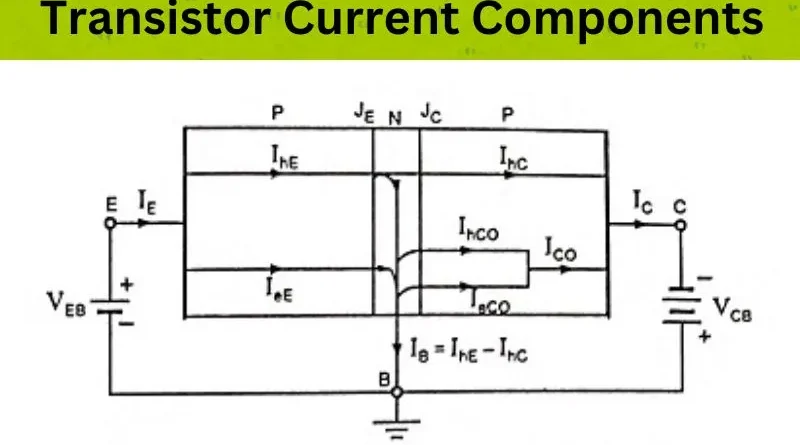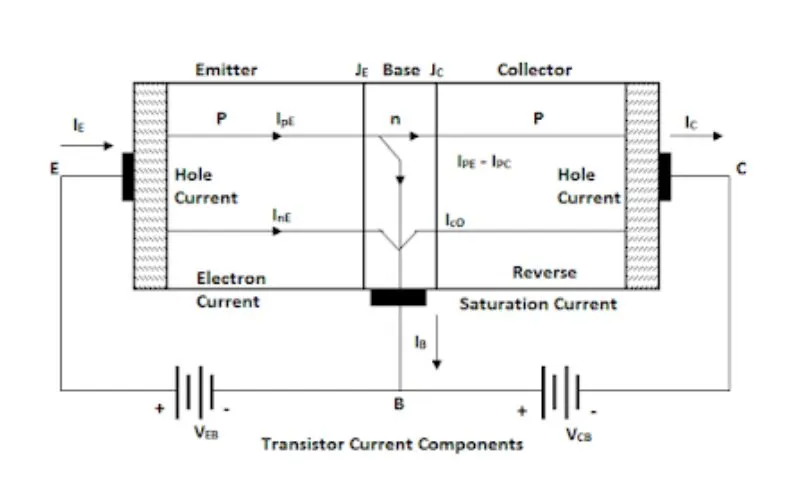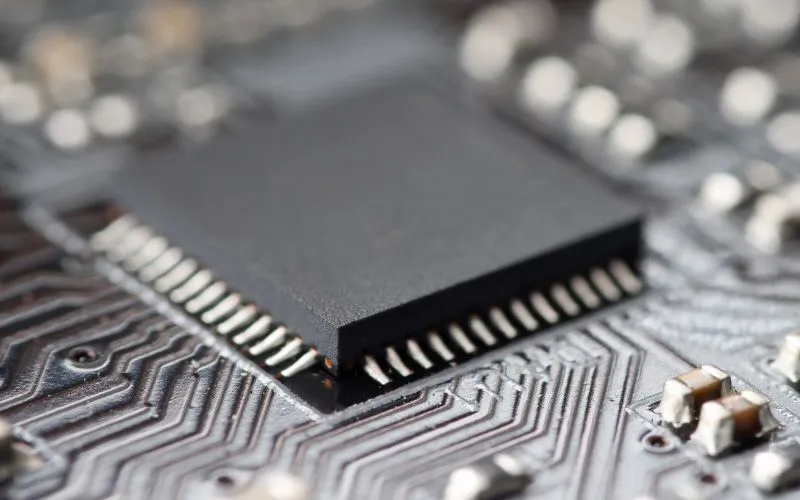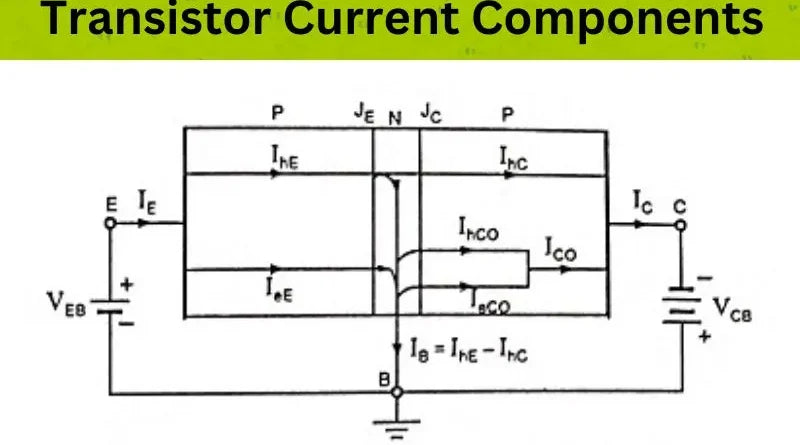
Welcome to an exciting exploration of the dynamic realm of transistor power components. In the ever-evolving electronics landscape, these components play a critical role in how we use and control electrical currents. Transistors may be small, but they pack enormous power, revolutionizing technology and supporting the development of complex integrated circuits. From powering everyday electronic devices to enabling revolutionary innovations, transistor power components are at the forefront of modern technological advancements. Together, we will unlock the secrets and limitless potential of transistor power components to catapult us into a future limited only by our imagination.
Transistor Power Components
Transistor power components form the fundamental structure for regulating and conducting electrical currents in electronic systems. From amplifying signals to activating precise switching, these components are the foundation on which modern electronics are built. The complex design and functionality of transistor power components allow engineers to develop innovative solutions. They find application in diverse areas, from consumer electronics to advanced industrial systems. Dive with us into the world of transistor power components. We explore its fundamental role in shaping the electronic control landscape.
Analysis of current transistor components
The image above shows the different power components of the transistor that flow through the forward-biased emitter and reverse-biased collector junctions.

-
The emitter current I C component consists of the hole current I Sports (holes passing from the emitter to the base) and electron current I no (Electrons move from the ground to the emitter).
-
The ratio of the hole and electron currents passing through the emitter junctions is proportional to the ratio of the conductivity of the p-type material to that of the n-type material. Because the emitter doping is much greater than the base doping, the emitter current in the PNP transistor consists almost entirely of holes.
-
Not all holes that cross the J E emitter junction reach the J C collection node because some of them combine with the electrons in the n-type base. If I computer is the hole current at t J C there must be a mass recombination of the current I SPORTS -I computer leave the ground as shown in the figure.
-
If the emitter were open, no charge carrier would be injected from the emitter to the base and the emitter current I E =0. In this condition the collector-base connection is J C acts as a blocking diode and therefore the last is I of the collector With would correspond to the reverse saturation of the last I CO.
-
Therefore, if an emitter-base connection is forward biased and a collector-base connection is reverse biased, the total collector current will be the sum of the two currents.
Types of Transistor Power Components
Transistor power components include a variety of devices that use transistor operating principles to control and manipulate electrical currents. Two common types of transistor power components are bipolar transistors (BJTs) and field-effect transistors (FETs).

Bipolar Junction Transistors (BJTs)
BJTs consist of three semiconductor layers available in NPN and PNP configurations. NPN BJTs have electrons as charge carriers, while PNP BJTs have holes. These transistors allow current to flow from emitter to collector with a small base current. Due to their versatility and high current gain, BJTs are widely used in amplification, RF circuits and switching circuits.
Field Effect Transistors (FETs)
FETs, on the other hand, work on the basis of controlling the majority of carriers in a conductive channel. They are available in two main types: junction field-effect transistors (JFETs) and metal-oxide-semiconductor field-effect transistors (MOSFETs). JFETs use a depletion region to control current flow, while MOSFETs rely on a gate voltage to create an electric field that modulates the conductive channel. FETs offer advantages such as high input impedance, low power consumption and excellent linearity. They are commonly used in applications such as amplifiers, analog circuits, and digital logic circuits.
parameter
Emitter efficiency δ
Transport factor β
The ratio between the injected carrier current that reaches the base-collector connection JC and the carrier current injected into the base-emitter connection JE. This sets the parameter.
β =I computer / I Sports ——> (C)
Transistor operating principle and functionality

- Use of Transistors: Transistors are used as basic electronic devices for amplifiers or switches.
- Transistors structure: They consist of three layers – emitter, base and collector – and are made of N-type and P-type semiconductors.
- Types of transistors: There are two types of transistors: bipolar transistors (BJT) and field effect transistors (FET).
- Working principle: The working principle is based on the interaction of minority and majority charge carriers.
- How the NPN transistor works: When a voltage is applied, the base-emitter junction in an NPN transistor is forward biased, allowing current to flow from the emitter to the base (IE).
- Current flow: Base current (IB) is the established base. The base current (IB) controls the collector current (IC), which flows from the collector to the emitter.
- Modes of operation: The transistor works in different modes: active mode for amplification, turn-off mode without collector current and saturation mode as a switch.
- Applications of Transistors: Transistors can amplify weak electrical signals and are used in amplifiers, oscillators, and digital logic circuits.
Large – signal current gain
The large signal current gain of a common base transistor is the reason for the negative increment in collector current. This is compared to the change in emitter current from zero (off) to IE. It is denoted by α,
Large signal current gain α = ( IC – EU Com ) / EU E ——> (d)
Since I C and I E have opposite signs, α is always positive.
Since I computer + I C – I With .
α = I P C / I E
= (I computer / I Sports ) XI Sports / I E )
Using equations (b) and (C)
α = β x δ ——> (e)
- Therefore, the alpha transistor is the product of the transport factor and the emitter frequency. This assumes that the collector multiplication ratio α* is equal to 1. α*n is the balance between the total current passing through the collector junction and the hole current (for PNP transistors) arriving at the intersection. For most transistors α* = 1.
If the emitter is forward biased and the collector is reverse biased, we get the collector current from equation (d) or
I C = –αI E + I With ——> (n)
- IC is independent of the collector voltage VC in the active region and depends only on I. E . To generalize equation (f), we replace ICO with the current I=Io(ev/ηvr-1) in a PNP diode for any value of VC.
I replace Ó by I With and V of V C, the complete expression for I C for each V C I replace CO, and I E is given by
I C = αI E + I With (1-e v/v R ) ——> (e)
Conclusion
The study and application of transistor power components across the vast electronic landscape is a testament to human ingenuity. These components, from the complex operation of bipolar transistors (BJTs) to the sophisticated control of field-effect transistors (FETs), have reshaped industries and added power to countless electronic devices.
Understanding its principles, taking advantage of its capabilities and exploring its diverse applications opens up possibilities. Transistor power components serve as the building blocks of modern electronics, enabling signal amplification, information processing, and the precise and efficient creation of complex circuits.
As we continue to push the boundaries of electronics, the transformative potential of transistor power components continues to be a beacon of inspiration. It takes us to a future that is only limited by our imagination.
Common questions
How do transistorized power devices work?
The power components of the transistor work according to the principles of semiconductor physics. These principles control current flow through interactions between minority and majority charge carriers. For example, in a bipolar transistor (BJT), a small current applied to the base terminal allows a larger current to flow from the emitter to the collector. This facilitates amplification or switching functions.
What applications do current transistor components have?
Current transistor components are widely used in a variety of electronic applications. They are crucial in modern electronics, from amplifiers and oscillators to digital logic circuits and power supplies. Their versatility and reliability make them indispensable in industries ranging from telecommunications and computing to automotive and aerospace technology.

